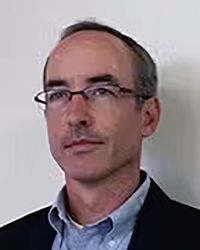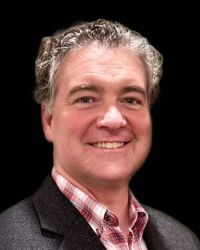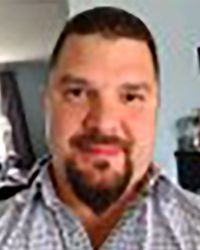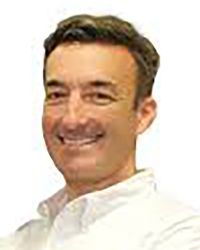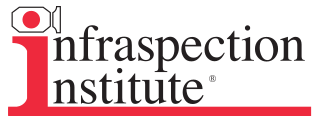IR/INFO 2026
Orlando, Florida
February 1-4, 2026
Infrared Conference and Infrared Training
LEARNING SESSIONS & SHORT COURSES
Short Courses & Workshops
- Short Course 1: How to Effectively Use Drones for Thermal Imaging
- Short Course 2: Demystifying IR Equipment Specifications
- Short Course 3: Infrared Inspections of Photovoltaic Systems
- Short Course 4: Techniques for Accurate Temperature Measurement
- Short Course 5: Infrared Inspections for Building Diagnostics
Speakers
The Dynamic Duo: How Ultrasound & Infrared Help You Work Smarter
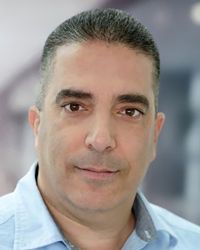
Ness Ziona 7403620
Isreal
Dual-Technology Inspections: The Power of UV and IR for Electrical Infrastructure Reliability
Relying on only one technology can leave critical defects undetected: for example, early- stage corona activity often occurs without significant heating and would not appear in infrared inspections, while resistive faults may generate heat but no corona. By applying both UV and IR inspections, utilities gain a more comprehensive view of asset health, enabling earlier fault identification, targeted maintenance planning, and reduced risk of unexpected failures. This dual-technology approach strengthens predictive maintenance programs and supports the overall reliability and safety of electrical infrastructure. Case studies demonstrating the benefits of this dual-technology approach in real-world utility applications will be presented.
Motor Efficiency…It’s Not Enough!
Efficiency is a word heavily used recently. Especially when talking about government. Efficiency by itself is not such a bad thing. In fact, efficiency is used in every facet of our daily lives. From driving to shopping to paying bills everyone is always looking to make the process more efficient. Companies and facilities are no different. When you are running an industrial manufacturing facility you must be focused on making that facility run as efficiently as possible or profits will be affected.
PRESENTATION OUTLINE:
- Motor Reliability
- Motor Efficiency
- Technology Efficiency
- Resource Efficiency
- Conclusion
LEARNING OBJECTIVES:
- Electric Motor Fault Zone Analysis Techniques
- Motor Efficiency Strategies
- Efficient Use of Technology
- Optimizing Resources for Efficiency
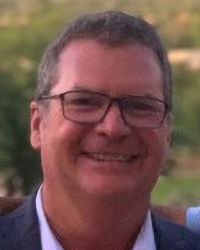
Unit 201
Palm City, FL 34990
Verifying Thermal Anomalies Associated with Infrared Roof Moisture Surveys
Verification can occur during or after the infrared scan, but for any accurate survey, it's a non-negotiable step. Without it, the risk of false positives — or missed problems — rises significantly.
This presentation discusses both non-destructive and destructive methods used to verify thermal anomalies. Core samples, moisture meters, and capacitance testing are just a few of the techniques we apply, depending on the roof type and insulation system. We also share findings related to common insulation materials such as polyisocyanurate board, lightweight concrete, and spray polyurethane foam.
Most importantly, we highlight the limitations of infrared on certain roof systems — insights we've gained through hands-on verification. Knowing where infrared may fall short is key to accurate diagnostics and long-term performance.
Infrared surveys are valuable, but it’s verification that turns data into decisions.
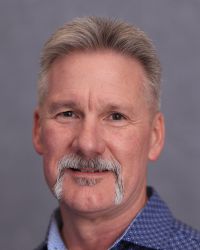
Dallas, TX 75211
The Need for Proper IR Training for NFPA 70B compliance
Being an Electrical Safety Instructor, I have seen more students attending training classes to obtain their certification for their company to comply with an electrical maintenance program since NFPA 70B has become a standard. Prior to being trained, it seems many companies believe purchasing an imager makes their workforce thermographers.
We will discuss infrared training and how essential it is to the reliable operation of any facilities’ planned maintenance program, and compliance to NFPA 70B. Being from a predictive background, I realize how important proper training is to obtain accurate information to pass on for equipment repair.
In section 9.2.2 NFPA 70B states all electrical equipment shall be checked with infrared, but also in 9.2.2.2 there is the allowance for deviation or alteration of the schedule if the equipment can be verified to not be a potential risk to personal or facility equipment if it fails. To have the deviation there must be a justification for the change that is documented in the Electrical Maintenance Program.

Sioux Falls, SD 57109
Using Infrared to Keep Production Efficient

Lakeland, FL 33813
What is Medical Thermography? - Discover the Future of Functional Imaging
Field Service Employees’ Intent to Stay or Leave

Suite A
Daytona Beach FL 32114
Utilizing Infrared to Detect Early Signs of Roof Failure
We will also cover potential next steps in the investigation and repair phase once failures have been identified.
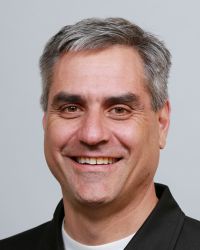
Wilsonville, OR 97070-8238
The Future of Infrared and how Apps are helping us increase reliability and safety in our plant.
- Smartphone and tablets are now commonplace, replacing greater than 96% of mobile phones because the Apps created for these edge devices solve problems for users or create new opportunities to engage with the world. Even in the traditionally conservative maintenance world, apps have enabled new ways of working and communicating within our organizations, supporting inexperienced workers to make safer, smarter decisions while reducing operational costs.
- Thermography apps have been available for iOS and Android devices for over a decade and have been employed to support inspections in general manufacturing, aerospace, building diagnostics, disaster restoration, and many other uses cases.
- Asset management apps are now a required part of virtually all CMMS software platforms. Using asset-hierarchy as a foundational element, apps have the potential to revolutionize thermography inspections.
- This session is focused on the potential to leverage apps to address a variety of common maintenance organization challenges, with an emphasis on thermography app development.

Chantilly, VA 20151
Optimizing Predictive Maintenance Through Integrated Technologies
The session will feature real-world examples of how these technologies are effectively integrated to enhance equipment reliability and operational efficiency. Emphasis will be placed on understanding the strengths and limitations of each method and how they complement one another in a comprehensive PdM strategy.
Additionally, the presentation will provide guidance on selecting the most appropriate technology — or combination of technologies — based on specific operational scenarios and asset conditions, helping practitioners make informed decisions to maximize maintenance outcomes.
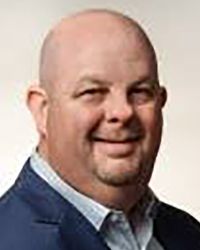
Anderson, SC
Beyond the Noise: Building an Effective Airborne & Structure-borne Ultrasound Condition Monitoring Program
To demonstrate real value, the presentation will also highlight key performance indicators (KPIs) and metrics that reflect both equipment reliability and energy conservation gains. Attendees will learn how to track and leverage data such as reduced compressed air leak rates, improved mean time between failures (MTBF), corrective vs. preventive maintenance ratios, and verified steam trap or bearing defect detections. Real-world examples will show how organizations can turn ultrasound findings into actionable insights, improve asset performance, reduce energy costs, and align with broader reliability and sustainability goals.
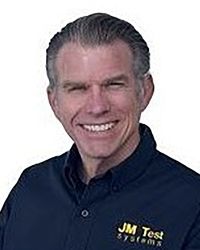
DeSoto, TX 75115-1910
Electrical Safety Qualifications for Performing Thermography Inspections on Energized Electrical Equipment
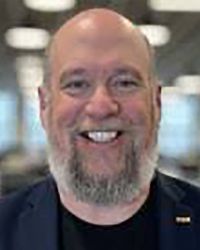
Colorado Springs, CO 80906
NFPA 70B for Thermographers: What’s Changed and How to Lead the Change
NFPA 70B just raised the stakes for thermographers. What used to be a best practice is now the standard, and it’s reshaping how thermal inspections are done, documented, and sold. In this session, we’ll look at what the new rules mean down from a thermographer’s point of view, how to talk to clients about compliance, and where the biggest opportunities are for growth. We will cover real-world examples, simple tools for staying compliant, and smart ways to stand out as a trusted expert in this new landscape.
Here’s what you’ll take away:
- What NFPA 70B now requires from thermal inspections
- How to guide your clients through the changes with confidence
- Ways to team up with manufacturers and service providers to expand your reach
- What the Monroe-Guidant partnership means for the future of the field
- If you're in the thermal game, this is your moment to lead and not just follow the new rules, but use them to build a stronger business.
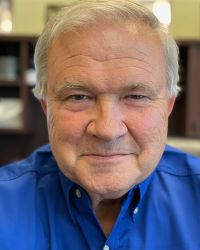
Louisville, TN 37777
A Healthy Dose of Electrical Reliability
The reliability information management system is used in the hospital’s annual IR inspections to assist with information integration, communication, and accountability. IR scanning is currently being used for monitoring many systems and continues to expand.
The hospital has found that each addition to the system will increase its value to the hospital, its service providers, and its employees and customers who depend on the facilities to be continuously and reliably operating.


Suite #700
Woodbridge, NJ USA 07095
Arc Flash Studies Unplugged: A Tactical Understanding
This presentation will provide attendees with a professional overview of the key components and methodologies involved in conducting a comprehensive power system study focusing on arc flash risk assessments. Emphasis will be placed on the following:
- Input data required for a successful assessment, including but not limited to, the following: voltage, X/R ratio, overcurrent protection device types and settings, cable sizes and lengths, utility fault current, transformers, generator, and motor contribution data.
- Participants will gain an understanding of how short circuit, protective device coordination, and arc- flash incident energy calculation studies are performed and the deliverables that should be included in the report.
- These studies are used to determine the short circuit withstanding ratings of the electrical equipment. These studies are also used to analyze the overcurrent protective devices and to ensure that they are selective. A fully selective system will ensure that the overcurrent devices are properly set to isolate faults without interrupting the entire system.
- The session will provide a general overview of arc flash assessments, PPE requirements and selections, along with the applicable standards such as IEEE1584, NFPA70, NFPA 70E and OSHA.
- The importance of accurate one-line diagrams and arc flash labeling in supporting electrical safety programs will be discussed.
Learning Objectives:
- Identify essential data required for power system studies.
- Understand basic methodologies for short circuit and protective device coordination analysis.
- Evaluate arc flash risk assessments and label application for compliance and worker safety.
- Provide some examples of arc-flash calculations focusing on the importance of tripping time and feeder lengths.
Maximizing Productivity in Thermographic Inspections through Workflow Optimization
In the realm of thermographic inspections, the efficient organization of images and data is paramount to ensuring accuracy and productivity. This presentation explores methodologies for structuring and managing extensive inspection data and emphasizing the importance of an optimized workflow. By leveraging advanced software solutions, we propose a streamlined approach to handle large-scale thermographic inspections.
These tools provide robust capabilities for image analysis and reporting, enhancing data management by automating the identification and categorization of inspection sites. Together, they facilitate a cohesive workflow that minimizes manual intervention, reduces errors, and accelerates the inspection process.
Attendees will gain insights into best practices for data organization, learn how to integrate these software solutions into their inspection routines, and understand the benefits of a systematic approach to thermographic data management. This non-commercial presentation aims to equip professionals with the knowledge to enhance their inspection efficiency and accuracy through optimized workflows.
The Importance of Secondary Verification Using Non-Invasive Methods
Topics will include the reduction of unnecessary core cuts through strategic use of diagnostic tools, thereby preserving roof integrity while maintaining confidence in survey results. A comparison of key technologies will be presented, including Nuclear Moisture Density Gauges and Capacitance Gauges along with practical guidance on their application, strengths, and limitations.
Attendees will learn best practices for correlating non-invasive data with core sampling, and how to maximize information gathered from Infrared Thermography by integrating nuclear and capacitance verification. Special attention will be given to understanding tool selection, licensing requirements, and regulatory considerations, helping professionals elevate the reliability of their diagnostic evaluations. Whether for warranty inspections, restoration candidate assessments, or proactive asset management, secondary verification remains an indispensable component of a comprehensive roofing diagnostic strategy.
IR Window Transmission Rates — Transmission Effects on Delta T Analysis
When using IR windows to perform routine thermographic inspections, thermographers need to consider the effects of Transmission rate of the IR optic when comparing the temperature data of two similar components (delta T analysis). Transmission and Emissivity compensation are very similar: Failure to properly compensate for either will lead to inaccurate data, which can lead to inaccurate conclusions, resulting in false positive or false negative reports.
Topics explored will include:
- What are the various IR window optic materials?
- What are the Transmission characteristics of those materials and what are their implications of Transmission rates?
- What happens to Transmission characteristics as various optic materials age?

Shelby, NC 28150
Fire Service Thermography: Firefighting Thermal Imaging Cameras vs Industrial Thermal Imaging Cameras
Whereas, in he fire service, firefighters use LWIR qualitative thermal imaging cameras with very limited adjustable settings where the analysis to identify the problem must be done in seconds. In addition, firefighters do not have the luxury of controlling the variables such as FORD (focus, range, and distance), environment conditions, emissivity, and more. They must make these decisions quickly and then scan each room or environment that is the most unforgiving and challenging space to operate a thermal imaging camera in (low to zero visibility with various densities of smoke and moisture). And if they misinterpret the data, the consequences can be deadly.
Industrial thermography has made vast improvements in image quality, innovative features, and more. Whereas firefighting thermal imaging cameras were originally very large, expensive, and produced a poor image for the environment it functioned in.
In 2013, NFPA introduced the NFPA 1801 Standard for Thermal Imaging Cameras which provided improved recommendations on the specifications, design, and durability of firefighting thermal imaging cameras. Since that date, many improvements have been made in the consensus standards and the overall technology.
This presentation will cover these improvements and discuss the intersection of industrial thermography and fire service thermography. The presentation will invite user feedback on several topics including education, technology, and collaboration between both fields.
Who Should Attend
- Thermographers
- Process Control Supervisors
- Maintenance Managers
- Loss Control Specialists
- Reliability Engineers
- P/PM and NDT Personnel
- Manufacturers
- Quality Assurance Inspectors
- Home and Building Inspectors
HOW YOU WILL BENEFIT
- Continuing Education
- Explore New Technologies
- Network with Seasoned Experts
- See Latest Hardware & Software
- Share Ideas with Others
- Discover New Applications & Techniques

